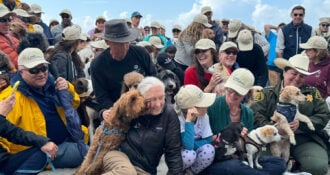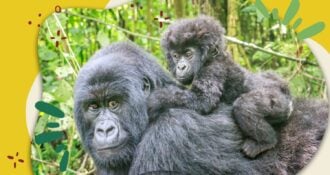The Leakey Foundation held our spring 2017 granting session on April 29, 2017. Our Board of Trustees unanimously approved twenty-nine research grant proposals for funding.
Here are some numbers from our spring 2017 granting cycle:
There were 111 applications for research grants this cycle.
31% of the proposals were categorized as behavioral, and 69% were paleoanthropology.
455 reviews were submitted to our grants department this cycle. Thank you to our reviewers! We could not do it without you.
We would like to congratulate all of our new grantees, and we look forward to sharing news and information about them and their research along the way!
Behavioral
Laura Abondano, University of Texas at Austin: Mating strategies of female lowland woolly monkeys in Amazonian Ecuador
Iulia Badescu, Yale University: Infant feeding and nutritional development correlates of fitness components in wild chimpanzees
Joel Bray, ASU Foundation for A New American University: Social relationships in male chimpanzees: Form, function, and development
Elaine Gomez Guevara, Yale University: Epigenetics of primate longevity
Sean Lee, The George Washington University: The ontogeny of social behavior and facial form in Pan
Stefano Carlo Lucchesi, Max Planck Institute for Evolutionary Anthropology: Role of ecology in intercommunity relations in bonobos, Kokolopori, DRC
Carrie Miller, University of Minnesota: Does paternity certainty elicit protection and support of offspring by male gelada monkeys?
Sam Patterson, Arizona State University: Maternal predictors of infant developmental trajectories in olive baboons
Megan Petersdorf, New York University: The reproductive ecology of the little-known Kinda baboon (Papio kindae)
David Samson, Duke University: What drives sleep flexibility? A comparative investigation of circumpolar and equatorial hunter-gatherers
Paleoanthropology
Irisa Arney, University of Michigan: East African Miocene evolutionary ecology
Amy Bauernfeind, Washington University: Comparative gene expression of primate cerebellum
Aly Baumgartner, Baylor University: Paleoclimatic reconstruction of the Miocene on Rusinga Island, Kenya
Marianne Brasil, University of California, Berkeley: Skeletal morphology of early Homo sapiens from Middle Awash, Ethiopia
Lucia Carbone, Oregon Health & Science University: Investigating how the LAVA retroelement shaped the gibbon transcriptome
Marco Cherin, University of Perugia: Exploring Site S: New bipedal footprints at Laetoli (Tanzania)
Susanne Cote, University of Calgary: Excavation of an exceptionally preserved Miocene catarrhine at Moruorot, Kenya
Harold Dibble, University of Pennsylvania: A micro-contextual approach to Neandertal fire use at Pech de l’Azé IV (France)
Tamara Dogandzic, Max Planck Institute for Evolutionary Anthropology: Late Middle and Early Upper Paleolithic in the Balkans
Emma Finestone, Graduate Center, City University of New York: Examining the Oldowan through time on the Homa Peninsula
Mae Goder-Goldberger, University of Ben Gurion in the Negev: The site of Far’ah II, western Negev, and the MP-UP transition
Andres Gomez, J. Craig Venter Institute: Host-microbe interactions in the primate gut: Implications for human origins
Jason Kamilar, University of Massachusetts Amherst: The evolutionary ecology of primate hair and skin microbiomes
Elaine Kozma, Graduate Center, City University of New York: Climbing performance in African apes
Shannon McFarlin, The George Washington University: Skeletal recovery and research of Bwindi mountain gorillas, Uganda
Enquye Negash, The George Washington University: Modelling vegetation structure in modern ecosystems; Implications for hominin ecospace
Thomas Plummer, Queens College, City University of New York: Excavation of ca. 2.6 Ma Oldowan sites at Nyayanga, Kenya
Christian Tryon, Harvard University: Archaeology and modern human origins: Investigations of the Late Pleistocene Nyanza Rift, Kenya
Deming Yang, Stony Brook University: Isotopic variability among Plio-Pleistocene Turkana suids: Paleoenvironments and hominin evolution






Comments 0